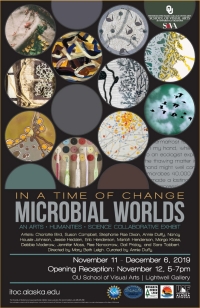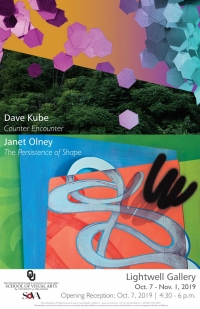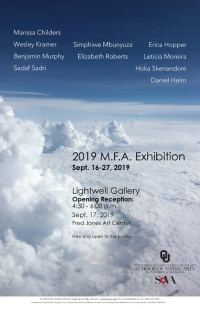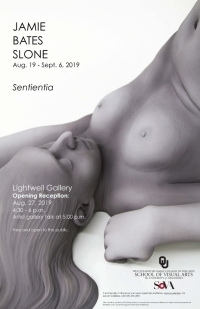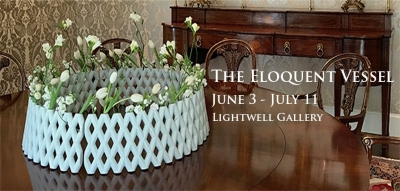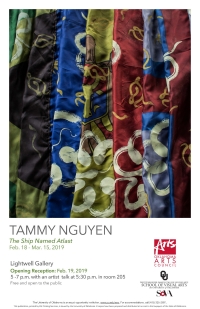OU Alumna Mary Beth Leigh brings Microbial Worlds to Lightwell Gallery
The next exhibition at the University of Oklahoma School of Visual Arts Lightwell Gallery will allow visitors to see microscopic organisms from a whole new perspective.
Microbial Worlds, a collaborative arts-humanities-science exhibit featuring work from 14 artists and writers from Alaska, New York and California, was directed by University of Alaska Professor and OU alumna Mary Beth Leigh.
The fifth major project produced by the Alaska-based arts-humanities-science program In a Time of Change, Microbial Worlds will be on display in the Lightwell Gallery from Nov. 11 through Dec. 13, with an opening reception from 5 to 7 p.m. on Tuesday, Nov. 12. The gallery is located on the second floor of the Fred Jones Art Center, 520 Parrington Oval.
“Microbial Worlds is the culmination of extensive collaborative work in Alaska and Finland by visual artists, writers and scientists on the topic of microorganisms. Microbes are the most numerous and diverse organisms on the planet; they include bacteria, fungi, protozoa, algae and viruses. While some cause disease and contribute to climate change, others are responsible for promoting human health, removing toxins from the environment, and maintaining healthy ecosystems,” Professor Leigh stated.
She added, “The Alaska-based group of artists met monthly for 16 months with Leigh and other scientists to learn about microbiology through lectures, laboratory activities and field trips to Toolik Field Station in the Arctic tundra biome and Bonanza Creek Experimental Forest in the Interior Alaskan boreal forest. Artists were also loaned microscopes in support of their independent research. The artists interacted with over 30 scientists through the course of the program, ranging from infectious disease microbiologists to ecosystem ecologists.”
In addition to Leigh’s work in Alaska, she also worked as an artist-in-residence in Northern Finland with Stephanie Rae Dixon, who, like Leigh is based in Brooklyn, New York. They worked together for three field seasons on a project investigating the role of microbes in boreal forest ecology, which resulted in the collaborative installation De:composition. Artists in the program then developed works inspired by the world of microorganisms, including their visual beauty and many roles in human and environmental health.
Leigh and Dixon are alumni of the University of Oklahoma, where they both earned Bachelor of Fine Arts degrees in modern dance and co-founded the Norman-based Deliquescent Dance Ensemble together with fellow OU dance students Karen Voyles (neé Flygare) and Tamora Petitt in the early 1990s.
Leigh continued her studies at OU, earning her master of science degree in botany (1997) and doctoral degree in microbiology (2003) and is now a faculty member at the University of Alaska Fairbanks, where she conducts research in environmental microbiology and coordinates arts-humanities-science integrative activities at the state and national levels.
Following graduation, Dixon pursued a successful professional dance career in New York, performing with Stanley Love and other choreographers and touring internationally with Fisherspooner. Dixon now works as a costumer for television (e.g., Blacklist and Bull) and film (The Comedian).
Petitt, OU modern dance alumna and Brooklyn-based dancer, will perform at the opening reception of the Microbial Worlds exhibit in a multimedia installation De:composition, which was created by Dixon in collaboration with Leigh based on field work together at Kevo Subarctic Research Station in Northern Finland.
Dixon created dresses worn by Leigh and a collaborating scientist in photo/video shoots that were then buried and allowed to decompose over the course of two years in an experimental tree garden in Finland, followed by annual repeated photo/video shoots. The installation features the decomposed dresses embedded in resin, live tundra plants, photos, video, original soundscape, DNA-based information about microbes involved in decomposition, together with a special live dance component during the opening reception.
Microbial Worlds was made possible by the National Science Foundation, the Bonanza Creek Long-Term Ecological Research program, the University of Alaska Fairbanks Institute of Arctic Biology, UAF CITE Fellows Program, Toolik Field Station, Kevo Subarctic Research Station, and anonymous donors. Generous funding for Microbial Worlds’ appearance at OU was provided by the OU School of Visual Arts with kind support from Jonathan Hils and the College of Fine Arts dean, Mary Margaret Holt.

